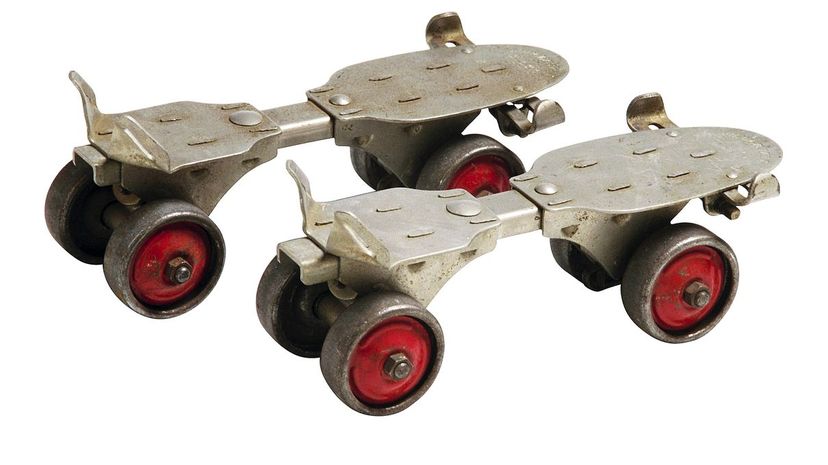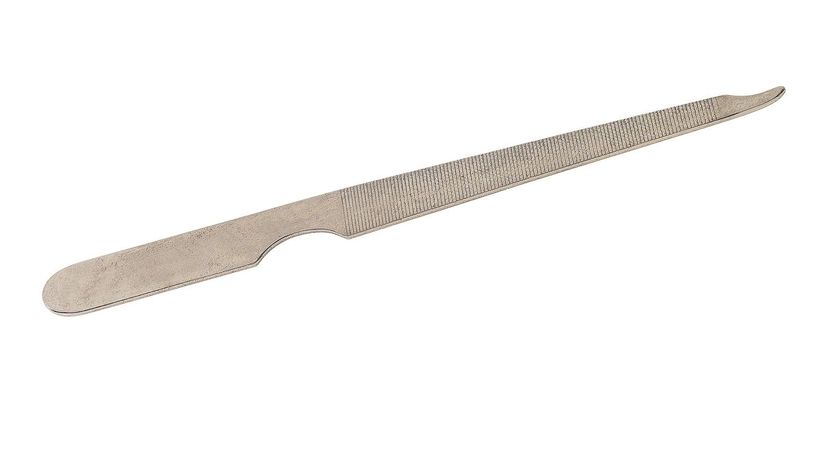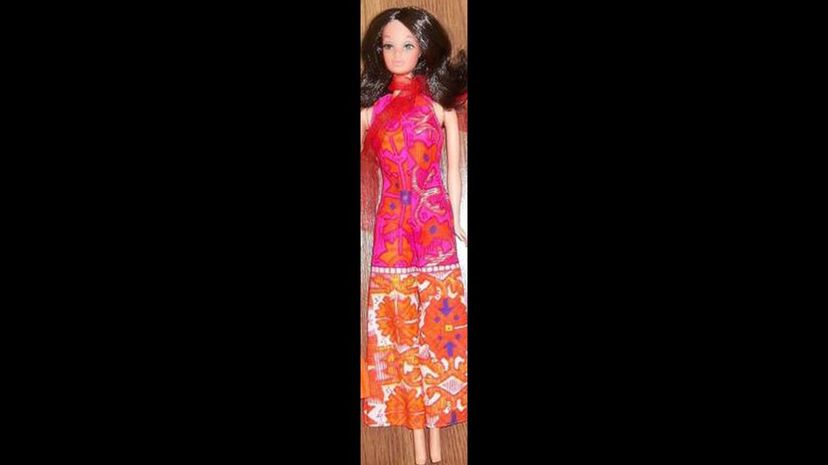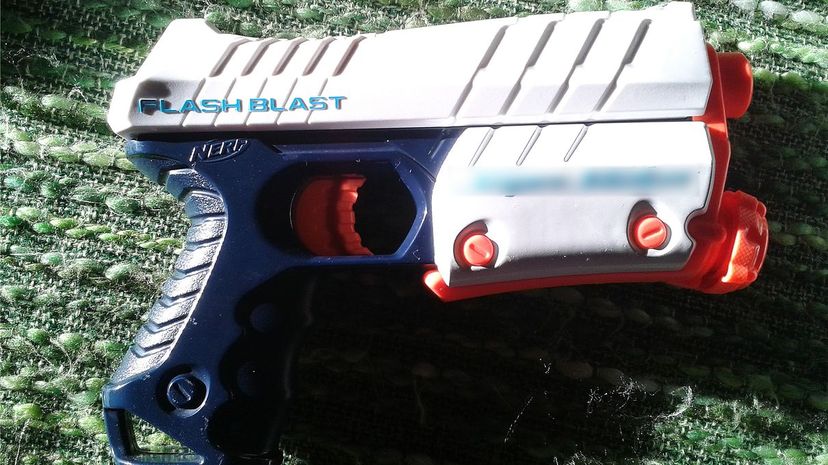
About This Quiz
From the phone on which you're probably reading this to the chair on which you're sitting, modern technology, household items and toys all have an origin. These things evolved over the decades to be better, sleeker, and more efficient. While you may be able to recognize modern items, their retro counterparts can be a little trickier. Imagine the time when computers filled entire rooms and couldn't even connect to the outside world. Now, imagine your life connected to a wall while talking on the phone. You'd have to talk on that phone rather than sending a quick text, Snap, or video message. Talking on the phone was, long ago, the fastest and most efficient way to connect with another person.Â
No matter when you grew up, you have a sense of nostalgia for the retro items that you see in movies set decades ago or in those memes that ask you if you remember for what purpose items were used. This nostalgia gives you a center to hold on to while you look at the world around you. Your ability to recognize retro items gives you a sense of appreciation for accessibility of the world around you. If you think you're good at spotting and naming all things retro, try taking a walk down memory lane to see if you can identify these retro items.

The first radios were just that ... radios. They didn't have CD player options, record players, or even 8-track players. They were simply conductors of radio waves, bringing your favorite radio programs to your living room every night.

There were dozens of variations of the typewriter before the word processor was invented. Eventually, typewriters even allowed for an erase option that deleted mistakes. This was incredibly helpful to those who couldn't type with accuracy.

Way back when, roller skates were attachments for your shoes. However, safer versions were made that basically functioned as footwear. These days, rollerskates and rollerblades have been replaced with Wheelies and razor scooters.
Advertisement

Though not much has changed in the way of sound for vacuum cleaners, there are much sleeker designs. Some vacuum cleaners have even done away with expensive (and environmentally silly) bags.

If you've ever seen a detective film that was shot in the '60s or '70s, you recognize these awesome tape recorders. While they were bulky, they were effective, and created a great sound recording.

A washboard generally had a wood frame and a grooved metal surface. This made it easy to wash clothes. We use the term "easy" rather loosely here, as it would take most people an entire day to wash and dry a load of clothes with a washboard.
Advertisement

The first electric shaver was patented in 1930 by Jacob Schick. This guy really loved a close shave, because he (and his company) created some innovative shaving products.

While stand mixers haven't changed a whole lot in terms of what they do, their designs have changed quite a bit. These days, a stand mixer doesn't just mix. You can get attachments that allow you to roll pasta, grind meat, and shred cheese.

Nut grinders of the 1950s aren't much different than the nut grinders of today. However, the food processors of today can grind nuts better and faster (and with less physical energy) than actual nut grinders, so why bother?
Advertisement

Over time, the design of the sewing machine hasn't changed very much. However, newer models of sewing machines offer many more stitch options and require less manual work to operate.

If you're old enough to remember your juice coming in a can, you know that you needed to put two holes in the top of that bad boy to get the good stuff. One hole was for pouring and the other hole to relieve air pressure.

In the late 19th Century, the phonograph or record player as it would become known, was a great way to listen to your favorite music or speeches. The phonograph was invented by Thomas Edison in 1877 as both a recording and listening device.
Advertisement

On the second look, you may be telling yourself, "Oh, yeah, a nail file." While the design of the nail file hasn't changed much, the materials from which it is made have. These days, we get disposable nail files instead of the metal ones.

While you may have seen the hilarious videos of young kids trying to figure out rotary phones, they were actually very advanced for their day. People no longer had to call the operator to connect with others.

Back when it was delivered, milk needed more protection so it was put into thick, glass bottles to protect it from the elements. These bottles were returned (or picked up) whenever the next shipment of milk was delivered.
Advertisement

Strawberry Shortcake was sold with her other produce-inspired friends. The best part about these dolls was the fact that they actually smelled like the desserts and fruits after which they were named.

The compass was an amazing invention, but you had to know how to use it. A compass will only tell you which way is north. You have to figure out the rest.

These days, we have the Margaritaville margarita machine to crush our ice for us. However, for those unfortunate souls of the past, an ice crusher was what was necessary to create the ultimate hosting experience.
Advertisement

You didn't need a license to go incredibly fast on your toboggan. These excellent little manual snowmobiles were great fun for kids of every class since the early 1900s. A toboggan is generally more narrow than a sled, and larger models can hold many children.

You may have heard one of your elders refer to the refrigerator as the "icebox," and this is why. Of course, the older models of iceboxes were very fancy, and the refrigerators that replaced them were definitely not as cool (especially the green ones).

These days, you can scroll through your social media to contact those you know, or you can simply start typing their name (or nickname) into your phone and their contact info will pull up. Before cell phones, however, people had to alphabetize their contacts on their own in a Rolodex.
Advertisement

Pet Rocks were a huge fad in the 1970s. These inanimate joke objects were sold as live pets, and even came in a box with holes in it, so the little guys could breathe.

This game that basically shows the consequences of capitalism (money for one) was designed in 1933.

Once referred to as "old school memory cards," floppy disks didn't hold much, but with the programs of their day, they didn't need to hold very much at all.
Advertisement

While this doll looks creepy, it was a great doll for little children. The doll was patented in 1915 but was so easy to make at home, there were plenty of knockoffs.

Gumby and Pokey toys and products were all the rage from the 1950s through the 1990s. There was even a Gumby movie in the 1990s, and though it didn't do all that great, the toys always sold.

The Sony Walkman allowed you to walk around with your music playing in your ears. It was compact (sort of), and it gave you the ability to ignore adults who were yelling at you. The iPod would later allow you to walk around without bringing your tape collection with you.
Advertisement

While certain vintage VCR tapes can be collectibles, VCRs are relatively worthless (unless you have the videotapes that go with them). VCRs were the original TiVos, which are already obsolete as well (thanks, Hulu).

"Bozo the Clown" was a popular television show in the 1940s that featured, you guessed it, a clown named Bozo. His popularity spawned a line of products, including the Bozo Bop Bag, which would bounce back after you hit it.

These playtime vacuum cleaners by Fisher-Price are still in production today. These beloved toys were great learning tools for toddlers. Children love mimicking adults ... until they get to their teens, that is.
Advertisement

Originally a paper doll set with stick-on clothes, Holly Hobbie toys would later include Colorforms (shown here), dolls, porcelain figures, tea sets and more. Children loved her because she was full of promise and accessories (well ... hats). Fun fact: Holly Hobbie's creator was an artist and writer also named Holly Hobbie.

Garbage Pail Kids were the punk answer to Cabbage Patch kids. They gave children of the 1980s the ability to make fun of themselves while they collected cool cards and stickers.

One of the earliest home game consoles was the Atari 2600. It was sold with joysticks and cartridges. When we look at our iPads and Xboxes these days, we should be thankful for the crazy programming skills involved in creating the Atari consoles.
Advertisement

Before the Apple Watch (long before, actually), there was the Casio Touch Screen TC-500. It had an alarm, displayed the time and featured a calculator all in one. While it didn't use WiFi, it was pretty ahead of its time.

This was the first digital watch on the market, and it boasted an 18-karat gold encasement. In 1972, it cost a whopping $2,100, which makes the Apple Watch look basically free these days.

The Walk Lively Steffie doll is relatively unknown, but collectors seek it out. This 1970s doll with dark hair can be worth up to $800, in a mint-condition box. It really does pay to be Barbie's friend.
Advertisement

The original basketball was modeled after the soccer ball. The game was invented in the late 1800s in Massachusetts to help keep athletes in shape during the off-season.

That's right, your super soaker from the 1990s could be worth up to $500. Who would have thought squirt guns are worth more than most Beanie Babies?

This home computer was on the market for an astonishing 16 years. It was offered for personal use and public schools from 1977 to 1993. There were different models, but the Apple II Series sold 6 million units.
Advertisement